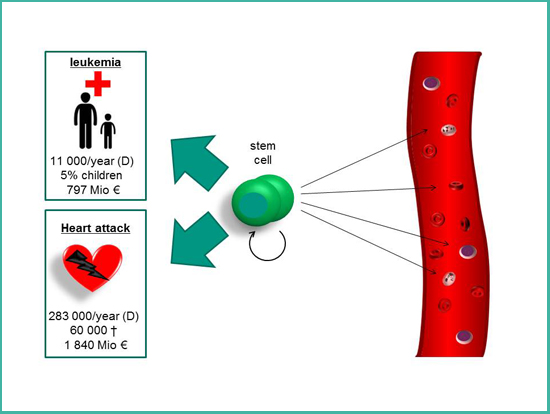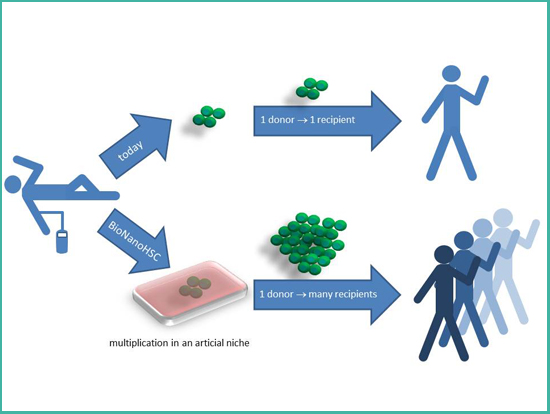BioNanoHSC
Dr. Cornelia Lee-Thedieck is successful in the Young Investigator Competition NanoMatFutur of the German Federal Ministery of Education and Research (BMBF) (http://www.bmbf.de/foerderungen/16771.php) with the project “Biomimetic Nanostructured Materials for Culturing Hematopoietic Stem Cells - BioNanoHSC”. The group will be funded for four years with 1.88 million € (FKZ: 13N12968).
Hematopoietic stem cells are the stem cells of the blood system and supply us during our entire life with fresh blood cells. Diseases of the blood system such as leukemia can be treated since the 1960s by replacing the diseased blood system with a healthy one by transplantation of stem cells or bone marrow from a healthy donor. Furthermore, hematopoietic stem cells hold great promise for the future treatment of patients after myocardial infarction – one of the leading causes of death in Germany

Figure 1: The stem cells of the blood. Hematopoietic stem cells are the life-long source of fresh blood cells. Since decades they are used to treat patients with hematological disorders such as leukemia. Additionally, they are promising for the treatment of patients after myocardial infarction.
An elegant approach to cover the demand of all patients who would profit from a treatment with hematopoietic stem cells is the multiplication of these stem cells in the laboratory. Today, this is not possible with a satisfying outcome. The only place where hematopoietic stem cells can multiply without restriction is their natural environment – their niche in the bone marrow. This niche is uniquely specialized for maintaining stem cells. New scientific discoveries show that material properties of the environment have a profound impact on cells. Therefore, the aim of the project BioNanoHSC is to study how stem cells interact with innovative nanostructured materials. The gained knowledge will be used to develop new materials with tunable material properties that mimic the natural environment of stem cells. These artificial niches will help to achieve the goal of a targeted multiplication of hematopoietic stem cells, which would be a great benefit for tens of thousands of patients.

Figure 2. Principle of the project BioNanoHSC.